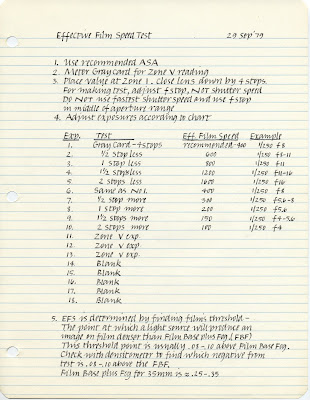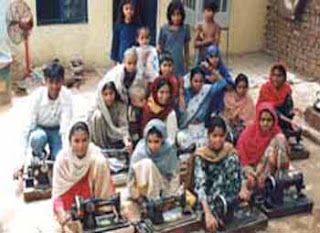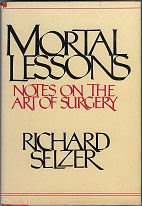
Responding to my April 20th entry, a reader named Christine writes:
“My cancer has progressed to the point where I am on my last leg of this journey. I was wondering if you could direct me to what the Bible says about facing death. In essence, what are your thoughts on dealing with grief and sorrow? My journey has been four years and as I approach the end, surprisingly I find that my emotional and spiritual struggle have not diminished but intensified.”Wow. I had to think about that one for several days, before attempting an answer. It’s not that I’ve never had to supply this sort of counsel before; it’s just that Christine poses her question so bluntly. Most people whom I visit in their final days raise the question obliquely, if at all. Whether they ask the question directly or not, I typically respond by sharing some of the great scripture passages that witness to God’s reliable presence.
For example, there’s Psalm 139, in which the psalmist imagines himself journeying to the very edges of the known world, only to find God still there beside him:
“If I take the wings of the morning and settle at the farthest limits of the sea,
even there your hand shall lead me, and your right hand shall hold me fast.” (Psalm 139:9-10)

For those who struggle with fatigue, cancer-related or otherwise, there’s always Isaiah 40:28-31, that promises:
“Those who wait for the Lord shall renew their strength, they shall mount up with wings like eagles, they shall run and not be weary, they shall walk and not faint.” (Isaiah 40:31)
Those of a philosophical bent may find some comfort in the timeless contemplations of “the Teacher” who wrote the book of Ecclesiastes. In these verses – immortalized for my generation by Pete Seeger’s folk anthem, “Turn, Turn, Turn” – he recalls how, in life, there is a time for everything, even a time to die:
“For everything there is a season, and a time for every matter under heaven:
a time to be born, and a time to die;
a time to plant, and a time to pluck up what is planted;
a time to kill, and a time to heal;
a time to break down, and a time to build up;
a time to weep, and a time to laugh;
a time to mourn, and a time to dance...” (Ecclesiastes 3:1-4)
Certain psalms, like Psalm 69, pull no punches when it comes to voicing the honest cry of human anguish. Perhaps, Christine, you’ve felt like this in recent days:
“Save me, O God, for the waters have come up to my neck.
I sink in deep mire, where there is no foothold; I have come into deep waters, and the flood sweeps over me.
I am weary with my crying; my throat is parched. My eyes grow dim with waiting for my God.” (Psalm 69:1-3)
So, what does it mean to speak of God saving us, in a time of serious illness – perhaps even illness unto death? Some may be tempted to blithely drop a pollyanna catch-phrase, like “Expect a miracle!” Yet, this is unrealistic, maybe even deceptive. We all know miraculous reversals like this – the sort that cause doctors to scratch their heads and say, “I don’t know what happened, there’s no medical explanation for the way that tumor just disappeared” – are rare indeed. Besides, even in those fortunate cases where a terminal illness reverses itself, the patient is still going to die of something, eventually. No, that sort of miracle merely buys a little time, that’s all.

No, the only ultimate consolation comes from promises such as Jesus’ words in John 11:25-26:
“I am the resurrection and the life. Those who believe in me, even though they die, will live, and everyone who lives and believes in me will never die.”Seeking to describe the life to come, Paul resorts to a variety of metaphors. In 2 Corinthians 4:16-5:1, he likens this present life of ours to a tent – a temporary dwelling, slated to be replaced by something more permanent:
“So we do not lose heart. Even though our outer nature is wasting away, our inner nature is being renewed day by day. For this slight momentary affliction is preparing us for an eternal weight of glory beyond all measure, because we look not at what can be seen but at what cannot be seen; for what can be seen is temporary, but what cannot be seen is eternal. For we know that if the earthly tent we live in is destroyed, we have a building from God, a house not made with hands, eternal in the heavens.”In 1 Corinthians 15, Paul uses a different, organic metaphor, that of a seed planted in the ground – one I’ve cited just upstream, in my April 14th entry.
At the end of the day, though, all these are just metaphors. Such poetry, lofty as it may be, captures the emotion, but inevitably falls short on details – for, who can chart with certainty lands no human has visited, save on a one-way journey? (Jesus, of course, being the notable exception, and he wasn’t talking – not on that subject, anyway.)
In the course of my pastoral ministry, I’ve spoken with more than a few people who’ve had near-death experiences. There are more of these people around than you may think. Most are pretty quiet about it. They’re hesitant to speak of such experiences, for fear of being misunderstood – but, if you give them a chance, they’ll speak in hushed tones, eyes brimming with tears, of bright visions no words can capture. I feel incredibly privileged to have heard a few of these firsthand testimonies.

We can’t make too much of these subjective experiences, though. They’re elusive, dreamlike – merely the shadow of a suggestion of what the next life may be like. Still, I take some comfort, personally, in observing that, whatever these soul-travelers experienced, there was no terror in it: only a sense of comfort and welcome and peace.
Reflecting on his own impending death, the pseudonymous author of 2 Timothy speaks of his hopes and fears using the common coin of his own culture. He portrays his life as a “libation” – a sacred offering of wine, to be poured out onto the ground, as the Greeks and Roman were wont to do:
“As for me, I am already being poured out as a libation, and the time of my departure has come. I have fought the good fight, I have finished the race, I have kept the faith. From now on there is reserved for me the crown of righteousness, which the Lord, the righteous judge, will give to me on that day, and not only to me but also to all who have longed for his appearing.” (2 Timothy 4:6-8)
Back in my chemo days – when I was feeling sick as a dog and far from certain Dr. Lerner’s promises of a likely remission would ever come to pass – I wondered if my own life was turning out to be just such a libation.

It’s a powerful image, even though we have to work a bit to translate it into 21st Century terms. Then, as now, it defies reason to upend a perfectly good cup of wine and pour its contents out upon the ground: but sometimes that primitive calculus is the only response that makes sense in face of the absurdity we call “death.”
Surely, we protest, there’s got to be a better way. Surely, God – if the Bible’s descriptions of divine power are true – has the ability to arrange things in some other way for us.
The hard fact is, God chooses not to exercise that ability. Sooner or later, our life-force is bound to run out in rivulets, like that libation-offering, poured upon some unimaginably ancient block of stone.
A libation. That’s what we’ll be, one day.
Poured out. An offering to a God who (we can only hope) is, as the scriptures teach,
“gracious and merciful, slow to anger and abounding in steadfast love” (Psalm 145:8).
If that is so, we will one day be able to affirm, with Paul, that:
“...in all these things we are more than conquerors through him who loved us. For I am convinced that neither death, nor life, nor angels, nor rulers, nor things present, nor things to come, nor powers, nor height, nor depth, nor anything else in all creation, will be able to separate us from the love of God in Christ Jesus our Lord.” (Romans 8:38-39)
That’s the sort of thing I’d be inclined to say to you, Christine, by way of summarizing the Christian witness about life and death.
On a more personal note, I’d also like to encourage you to try to step back and get some perspective on the faith-struggles you’re going through right now. A certain amount of
angst is to be expected. Strong emotion is understandably part of the experience. Cancer stinks. So does an early death. There’s no way to sugar-coat such hard realities.
I wouldn’t be at all surprised if you’re feeling angry, as well. Just read through some of those biblical psalms of lament, and you’ll quickly realize you’re not alone in this.
Doubt can be part of the psychic landscape, as well. (Remember, even Jesus went through his own crisis of faith in the Garden of Gethsemane.) You may worry, at times, that you’re losing touch with all the beliefs you once held dear, but that’s simply what dying is like. It’s profoundly disturbing and disorienting (Hollywood cliches about falling gently back on the pillow notwithstanding).

There’s nothing more disturbing nor disorienting in all of life. If - as the Christian faith teaches - death is actually rebirth into a new way of living, then wouldn’t it be reasonable to expect a bit of birth trauma? Just try to keep your eyes upon Jesus, the one whom the letter to the Hebrews calls
“the pioneer and perfecter of our faith” (Hebrews 12:2).
May God be with you.















































